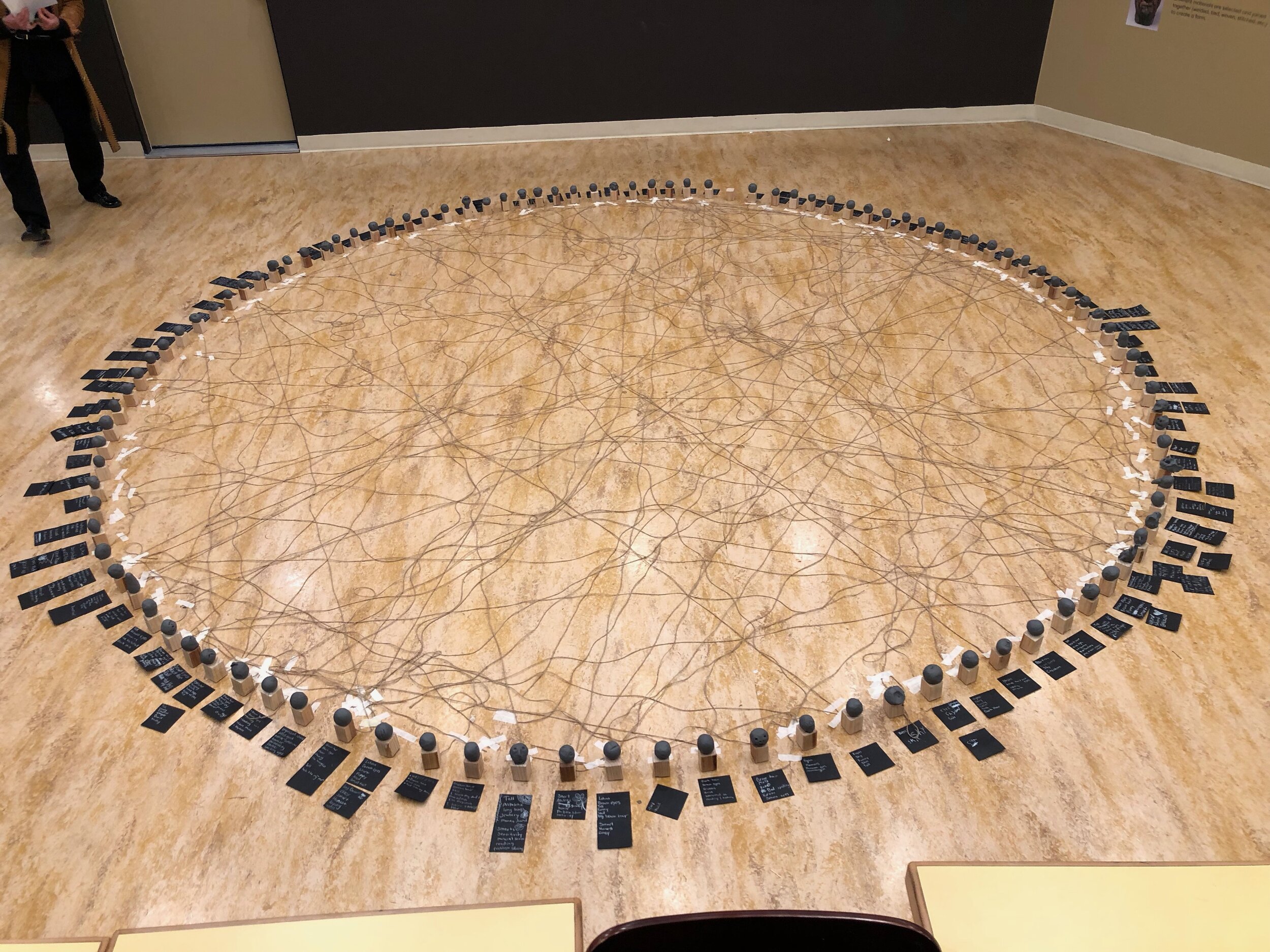
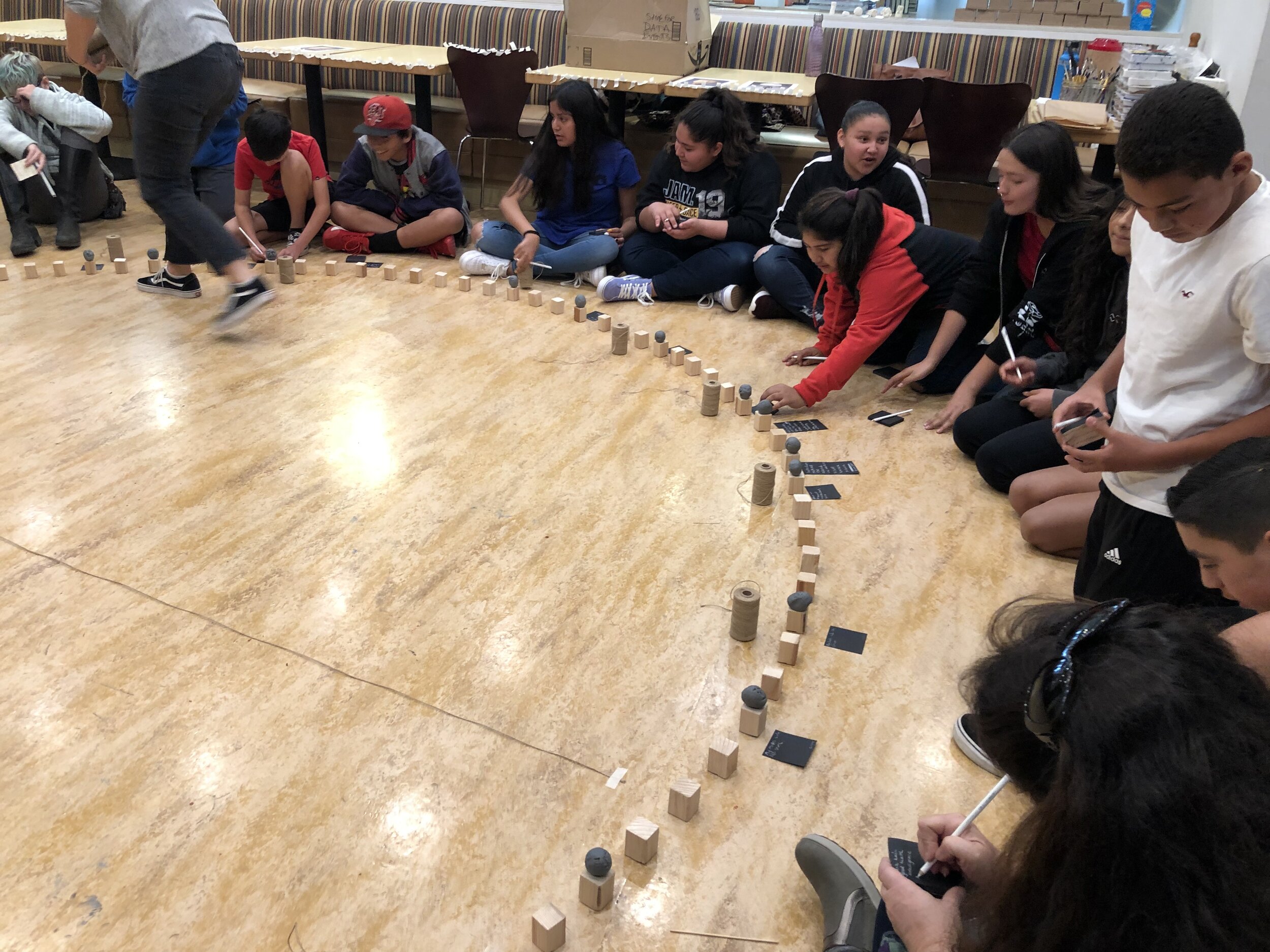
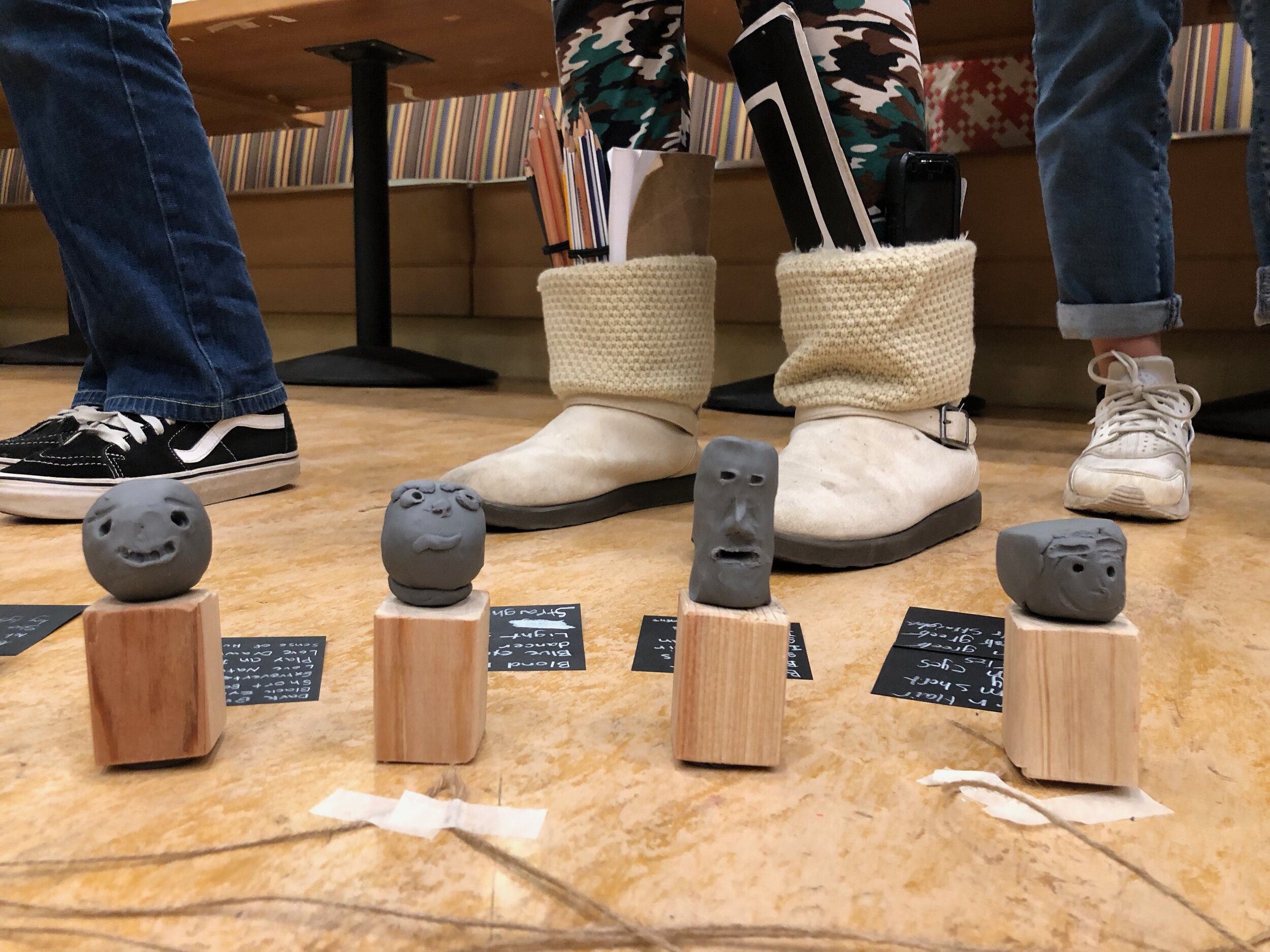
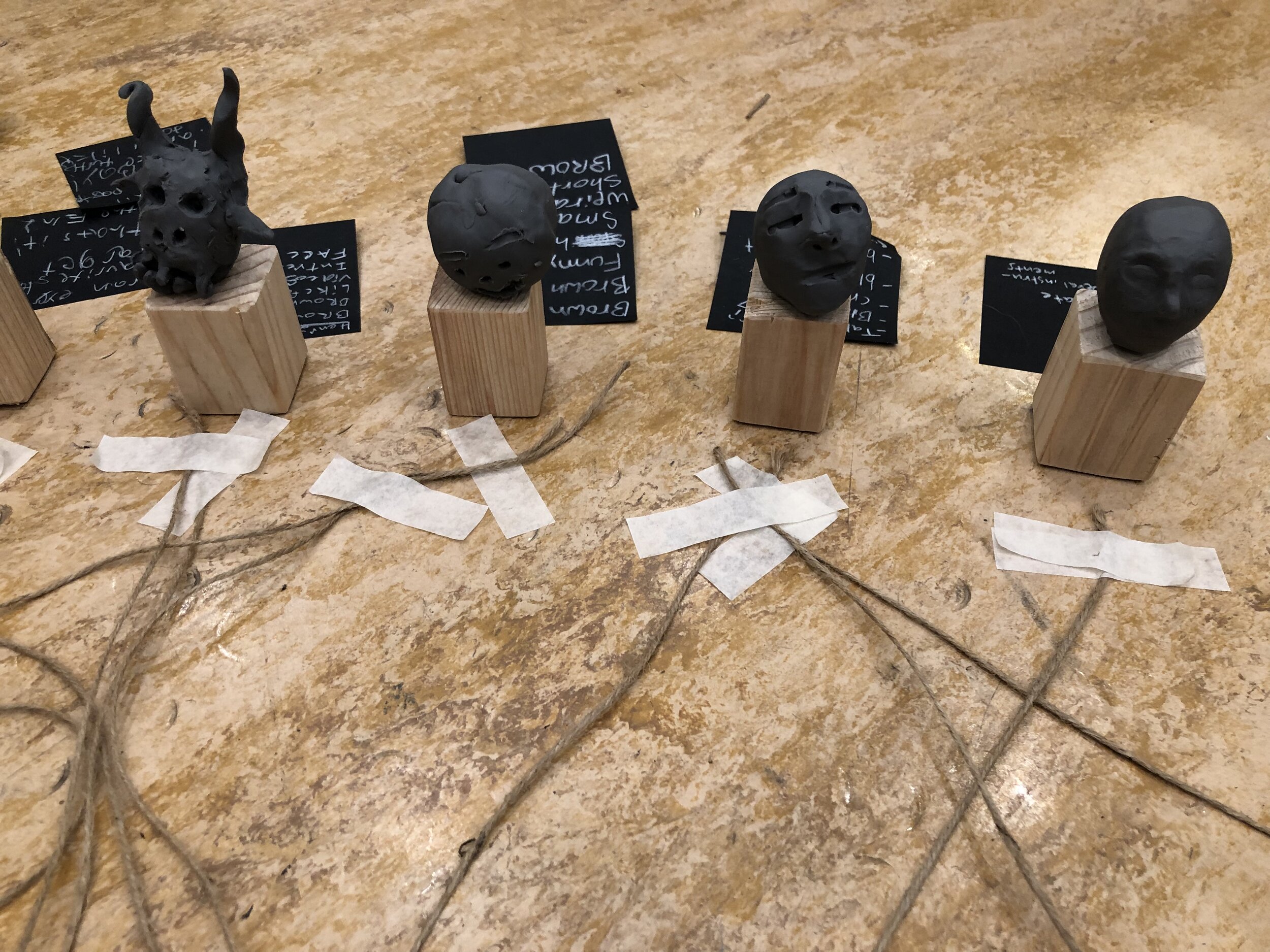

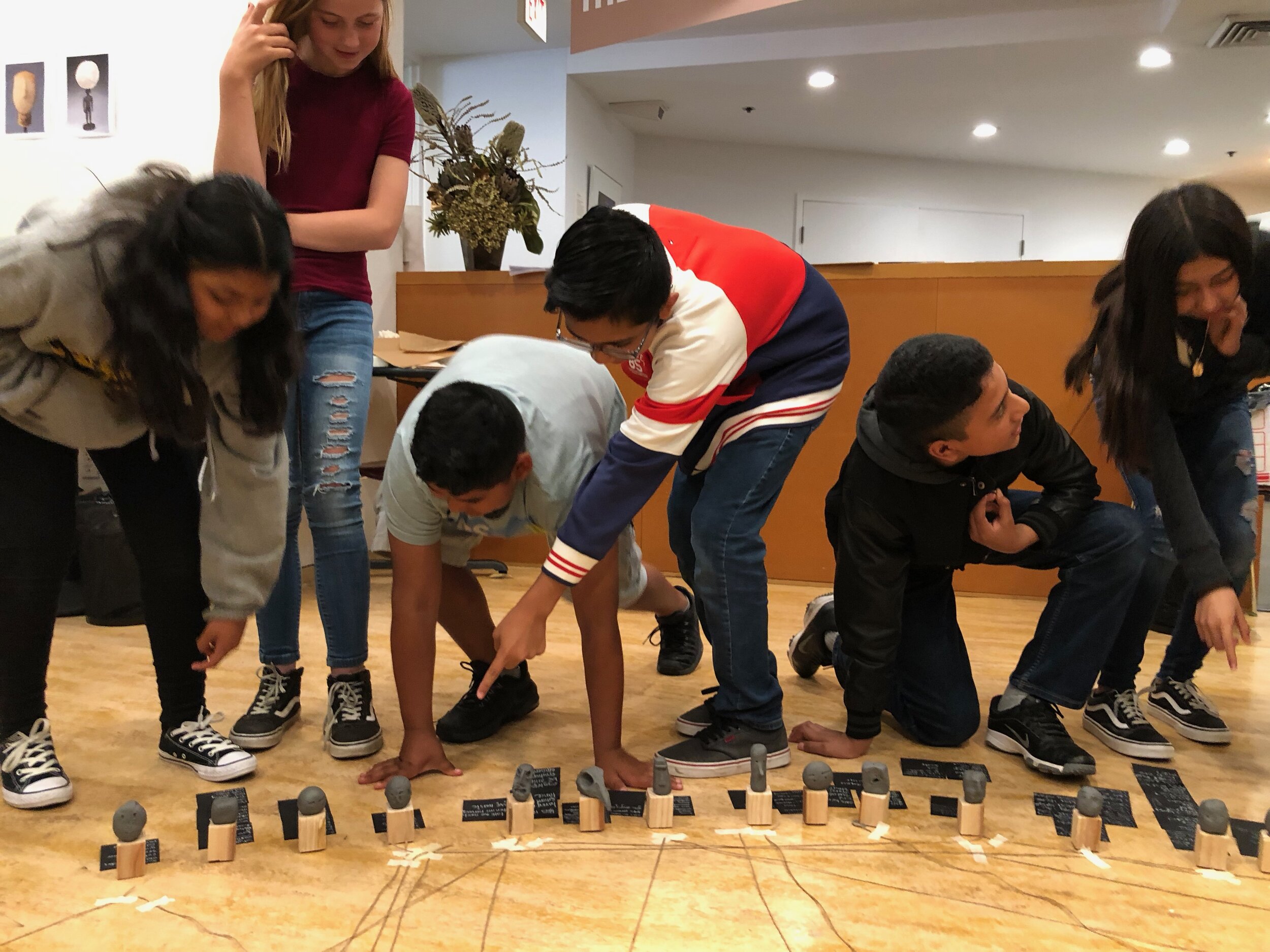

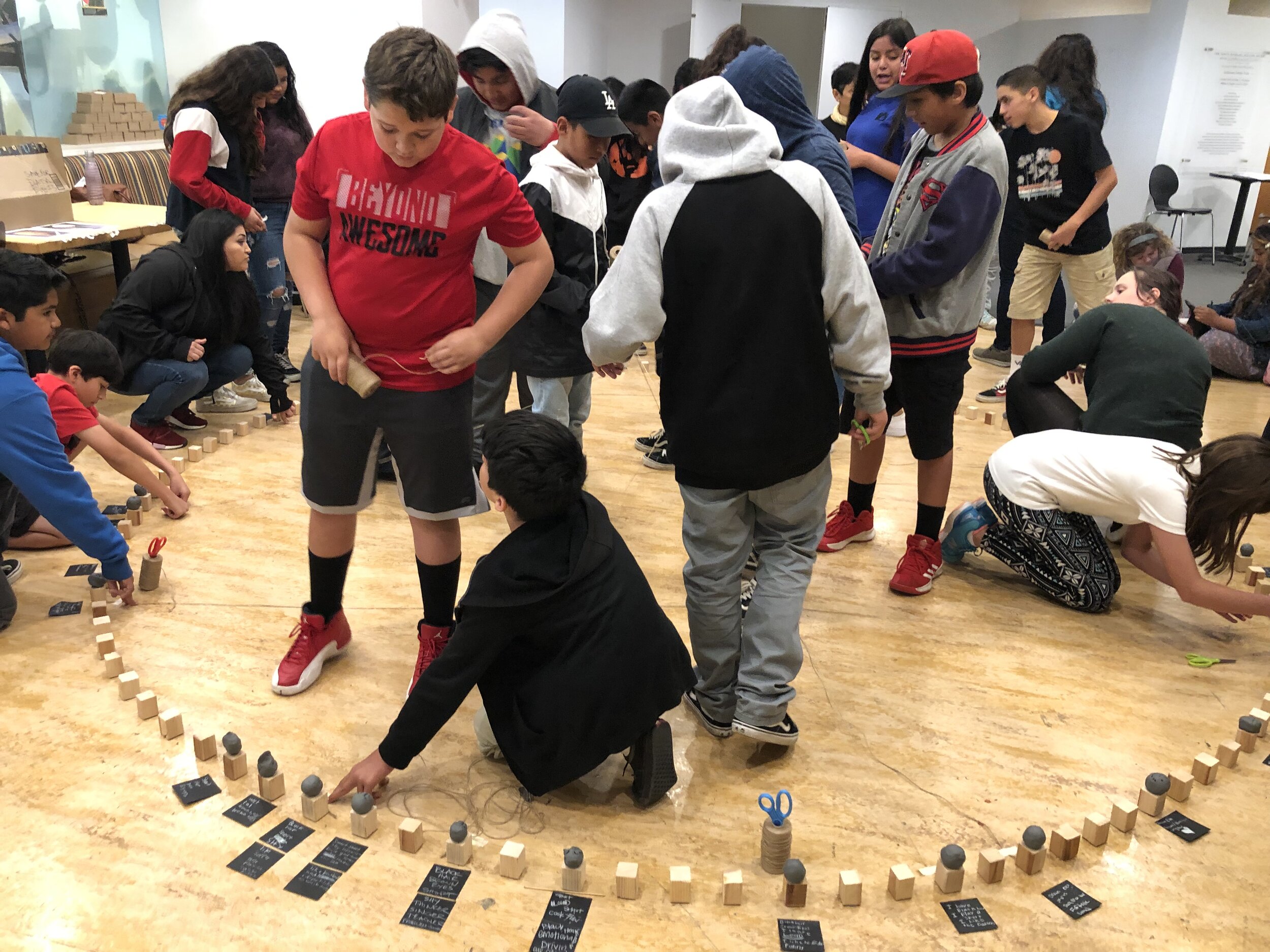
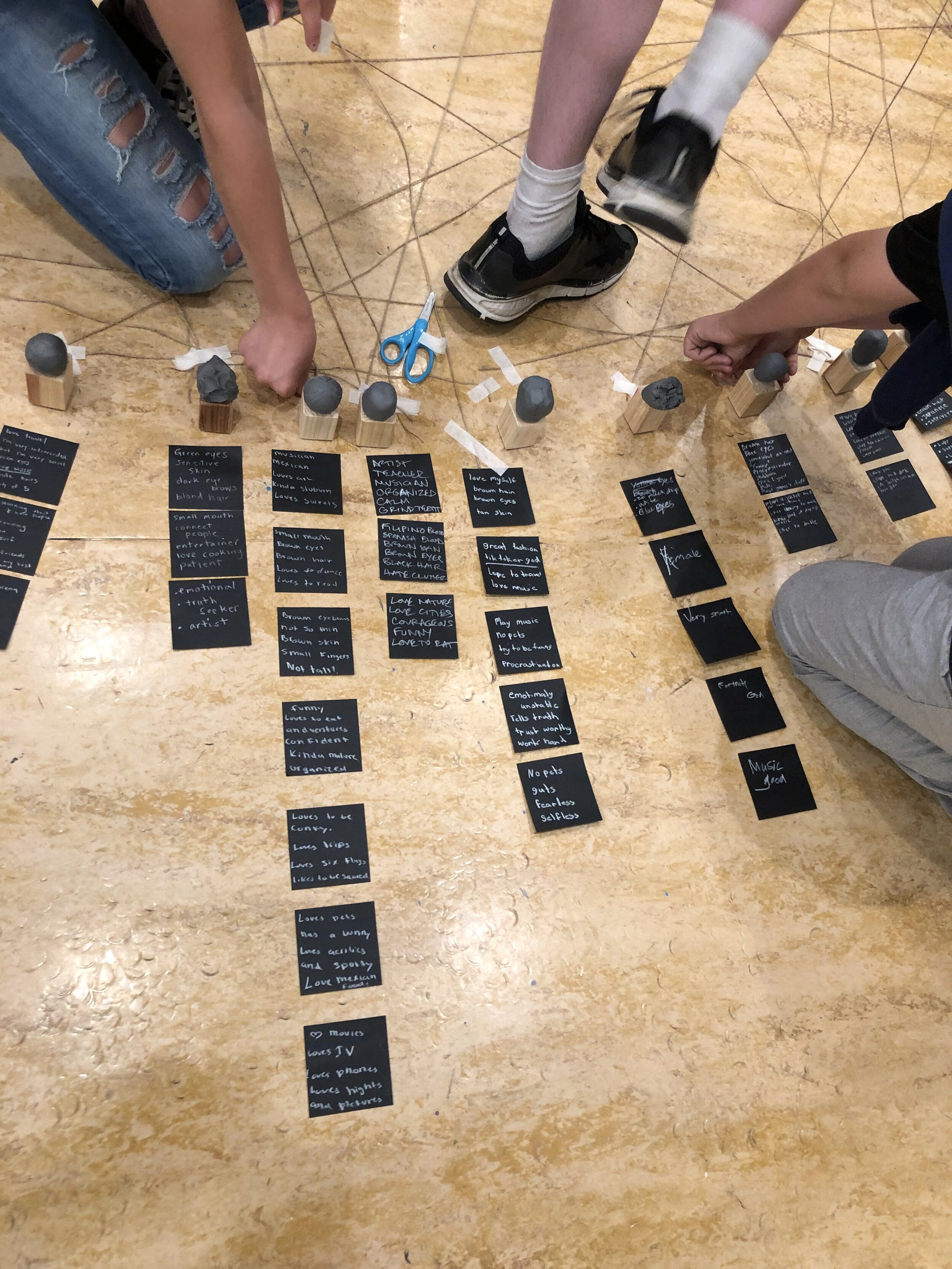
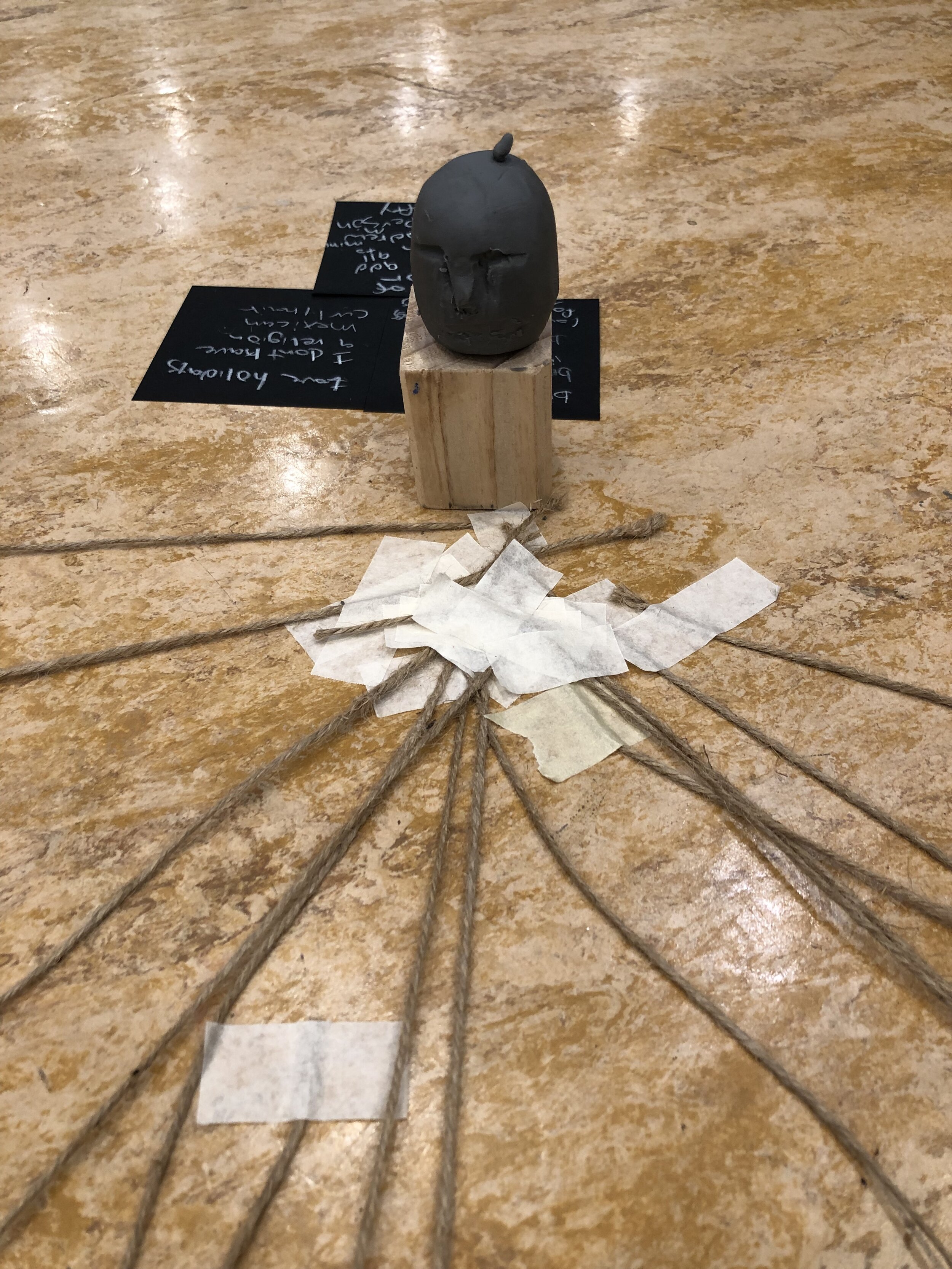

This interactive installation was enacted by 300 middle school students from Ventura, CA in 2019 as a project for the Santa Barbara Museum of Art.
Before participants entered the space, I asked what the word “ceremony” meant to them. Our brief discussion revealed the ways in which we honor and celebrate significant events in our lifetimes. Each participant was handed a lump of plastalina to hold, warm up, squeeze, and to help ground them upon entering our ceremonial space. Using two images from the Museum’s collection: a Cycladic head and Alison Saar’s 2009 piece, Inheritance, we spoke about our connection to the ancients, and how creativity, quotidian activities and ceremony were commonly interconnected for our ancestors. We also spoke about what we know we have inherited from our ancestors and immediate family, along with what remains a mystery.

Participants wrote all the inheritances they could think of on post-its. The wooden blocks in the circle became the pedestal for each unique plastalina head, and the post-its were placed at the base of each block.

We took a slow walk around the circle to read all the inheritances of the group. Participants were asked to take note when coming across a shared inheritance.

Working in pairs, participants were asked to connect their own head to others in the circle with whom they shared inheritances, using twine and masking tape. This could have been a chaotic moment, but students mindfully navigated their way across and around the various lengths of twine being stretched across the circle.

Participants could continue adding to their own inheritances throughout the process; after reading others’ post-its, many of us realized we could name more and more inheritances.

It was fascinating to see which heads had many connections, and which had only a few. Upon noticing that some of the twine had come unmoored from their starting or end points in the process, participants were encouraged to leave it that way. We thought about those pieces of twine as the connections and stories that we’ve lost along the way.